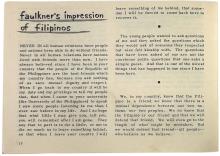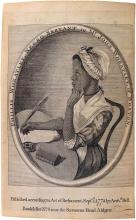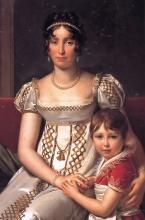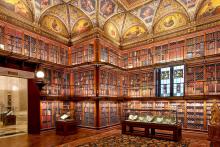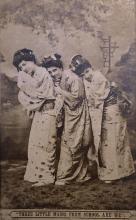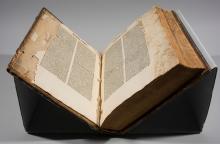Faulkner and Filipino kapwa: Kinship or Cold War Propaganda?
Submitted by Sam Mohite on Tue, 04/30/2024 - 1:50pmWhile searching the Morgan collections for Asian Americans and Pacific Islanders (AAPI)-related materials, I came across PML 185005. I was initially puzzled that a publication credited to American writer William Faulkner appeared in my “Philippines” keyword catalog search.

